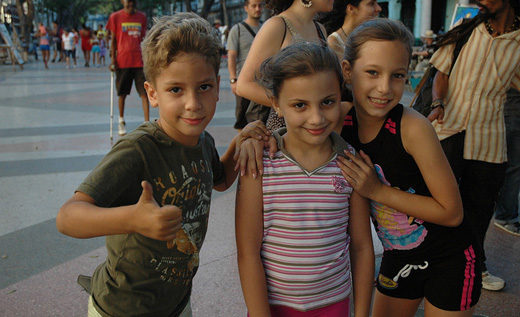
For Cubans, January 1, 1959, marks the “triumph of the revolution.” That day revolutionaries led by Fidel Castro gained state power. Today socialist Cuba seems to stand alone, an anomaly. Russia’s socialist revolution failed after 83 years. Socialist revolutions in China and Vietnam have been durable, but capitalist enterprises and market forces predominate in both places.
Cuba is different, seemingly, because of its history both before and after January 1, 1959. Traditions of revolutionary struggle account for the staying power of Cuba’s socialist revolution. In particular, aspirations toward national independence and a socially just society date from long ago and yet are undiminished.
Cubans fought two wars for independence from Spain; one began in 1868, another in 1895. At the time many wealthy Cubans opted for joining the Spanish colony to the United States. Jose Marti, organizer, leader, and ideologist of the 1895 war, had long inveighed against these so-called annexationists.
In a letter written in 1895 from a Cuban battlefield, where he would die, Marti attested to his “duty of preventing the United States from spreading through the Antilles as Cuba gains its independence, and from overpowering with that additional strength our lands of America. All I have done so far, and all I will do, is for this purpose.”
The war ended. Afterwards, the United States commandeered Cuba’s economic resources, unleashed military interventions, and manipulated one government after another. Students and unionists in 1933 rose up against the Geraldo Machado dictatorship. Military strongman Fulgencio Batista shortly took over. With U.S. backing, Batista would dominate Cuban politics, either as president or from behind the scenes, until his forced departure on January 1, 1959. Poverty and deprivation prevailed during the era of the republic, from 1902 to 1959.
The night of January 1, 1959, rebel commander Fidel Castro told people in Santiago, Cuba, “This time, lucky for Cuba, the revolution really will be completed … It won’t be like in ’95 when the Americans came and took possession of it. [They] wouldn’t even let Calixto García [and his rebel army] enter Santiago de Cuba.”
Cuba had regained its national sovereignty. The United States, in response, resorted to military invasion, terror attacks, guerrilla raids, microbiological warfare, sponsorship of an internal opposition, economic blockade, international financial isolation, media hostility, and radio and TV propaganda broadcasts.
Nothing worked. Cuban independence has survived. In defending national sovereignty, Cuba has had international law and world opinion on its side. Generalized respect for Cuban independence has extended to acknowledgement of Cuba’s right to choose a socialist course.
Likewise, long struggle for social change, that other marker of Cuban exceptionality, has buoyed up Cuba’s revolution, mainly due to its evident success. Rebel combatants in both independence wars were mostly slaves or ex-slaves, landless agricultural laborers, and poor urban workers. Their teacher, Jose Marti, had armed them with ideas, the primary one being “With all, and for the good of all.”
Speaking before a judge on October 16, 1953, Fidel Castro outlined tasks: “The problem of the land, the problem of industrialization, the problem of housing, the problem of unemployment, the problem of education, and the problem of the people’s health – these are the six problems we would take immediate steps to solve.” Defending the earlier attack by himself and young rebels on the Moncada Barracks, he ended his plea with: “History will absolve me.”
On January 1, 1959, the people of Santiago learned from Castro that, “The revolution begins now … The revolution will be a hard undertaking, full of dangers.” That being so, what did happen to meet the basic needs of all Cubans? The answer is at hand.
A recent article entitled “57 Realities of the Cuban revolution in 2015” takes note of achievements. A few of them are: 4 percent unemployment; maternal death rate, 35.1 deaths per 100,000 births; infant mortality, less than five deaths per 1,000 births (almost 70 prior to 1960); and life expectancy, 78.45. The data rank among the world’s most favorable. The state budgets 25 percent of its outlay for health care, 24 percent for education. There are 150 hospitals, 400 polyclinics, 11,000 primary care medical offices, and 140 maternity homes. In 2015-16, school enrollment from pre-school to secondary school totaled 1,792,600 students. Cuba has 60 “centers of higher education,”11.9 percent of Cubans are university graduates, 100 percent of Cubans age 15-24 are literate, and 99.8 percent of adults are literate.
So, ultimately, January 1 in Cuba marks a continuum from partial revolutionary fulfillment to future promise. Rosa Miriam Elizalde, editor of the Cubadebate.cu website, elaborates:
“Welcome, the 57th year of the triumph of the Revolution,” she writes, but “[t]ime does not begin, nor does it stop; it passes. … Time is a space made possible for our projects and those of others. It’s a field of struggle: A fight, A history. You and I … whether we like it or not, we form part of it.”
Photo: Cuban children in Old Havana, March 2015. | PW












Comments